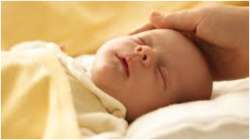High stillbirth rates worldwide linked to gender inequality
The study, published in the journal Nature Scientific Reports, found that pregnant women who are poor and have lower access to education and employment are more likely to experience a child's death at delivery.

Stillbirths are more likely in countries where gender inequality is high--where women experience financial challenges and have less access to education and employment opportunities compared to men, say researchers.
The study, published in the journal Nature Scientific Reports, found that pregnant women who are poor and have lower access to education and employment are more likely to experience a child's death at delivery.
"Our research offers a better understanding of where stillbirth rates are higher, and what the social causes underlying stillbirths are, not just taking into account the medical factors as most studies do," said study researcher Nazeem Muhajarine from University of Saskatchewan in Canada.
"Many mothers-to-be experience stillbirths around the world and this loss takes a personal toll on the families and the women who are preparing to give birth and see their dreams dashed. We hope we will help these women with our research," Muhajarine added.
Focusing on data from 194 countries, the model developed by researchers shows which social causes in addition to gender inequality have a potential link to stillbirth rates worldwide.
They found that stillbirths rates are more likely in countries where pregnant women have higher rates of anemia (iron deficiency caused by low nutrition), limited pre-birth healthcare, and lack of access to skilled professionals such as nurses, midwives or doctors for delivering the babies.
The US ask model, which used novel artificial intelligence software, also mapped the "hot spots" of highest stillbirth rates, a cluster of 37 countries in Africa and Southern Asia. Nigeria and Pakistan led with 43 deaths for every 1,000 children born.
This is an average four times higher than the 2030 national target of 12 deaths per 1,000 births of the World Health Assembly Every Newborn Action Plan (WHA ENAP).
The researchers also identified "cold spots" of low stillbirth rates, mostly in in Canada, Europe and Northern Asia, oscillating between one and 12 deaths per 1,000 births.
"A cultural change is needed in 'hot spot' countries around women's conditions," said Muhajarine.
"Not only should we offer better hospital services and more access to skilled healthcare professionals, but we also need to make sure that women and girls have access to enough food, better education and work opportunities, and are not married off too early," Muhajarine added.
The research team ran simulations to predict how to improve children's survival at birth, especially in "hot spot" countries.
The researchers found that to decrease stillbirths worldwide by 44 per cent would require improving women's access to education and by 51 per cent, and improving mothers' nutrition by 59 per cent compared to current worldwide rates.